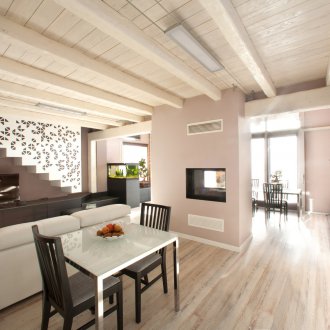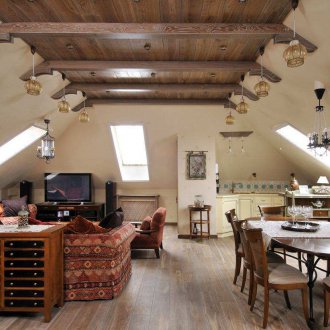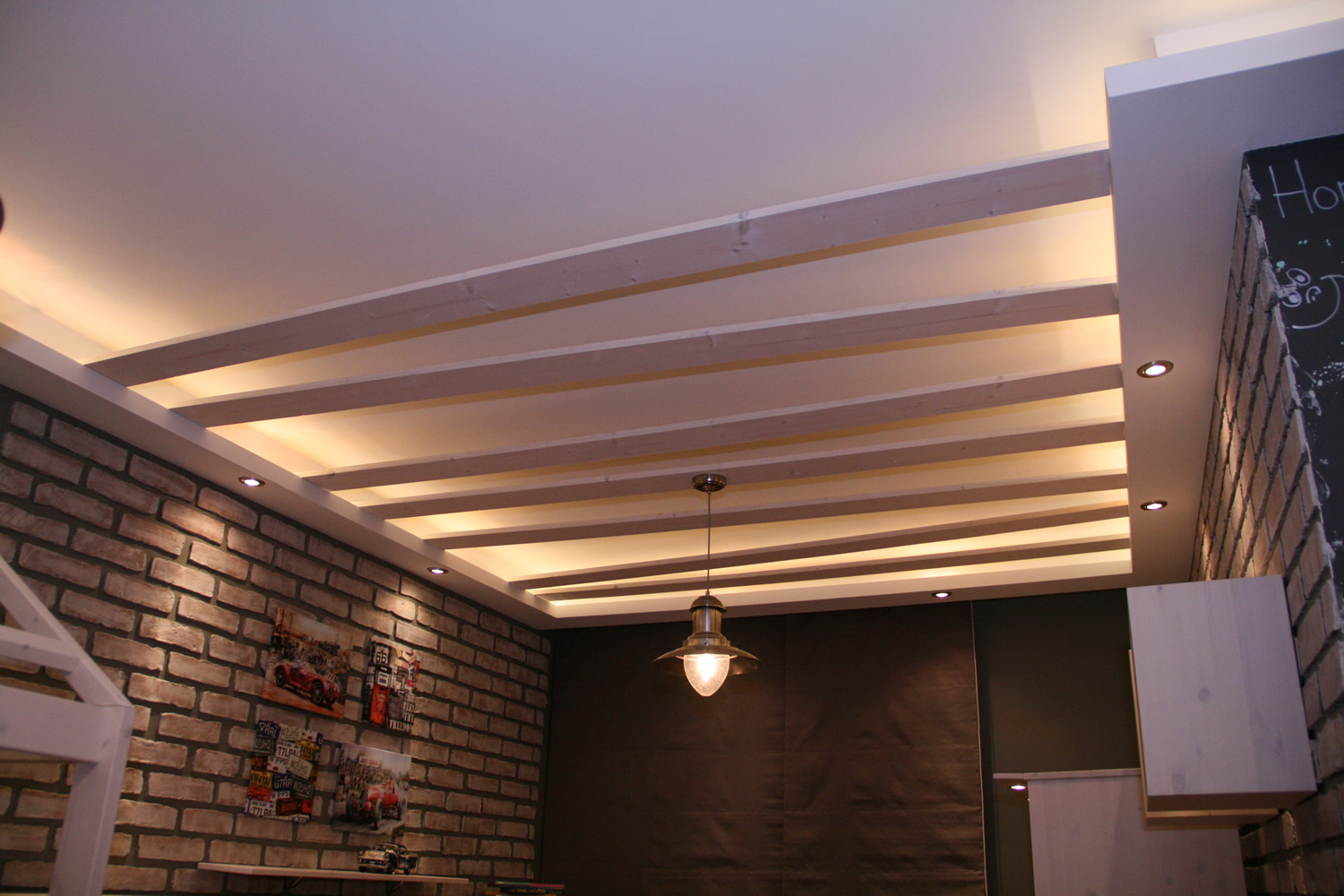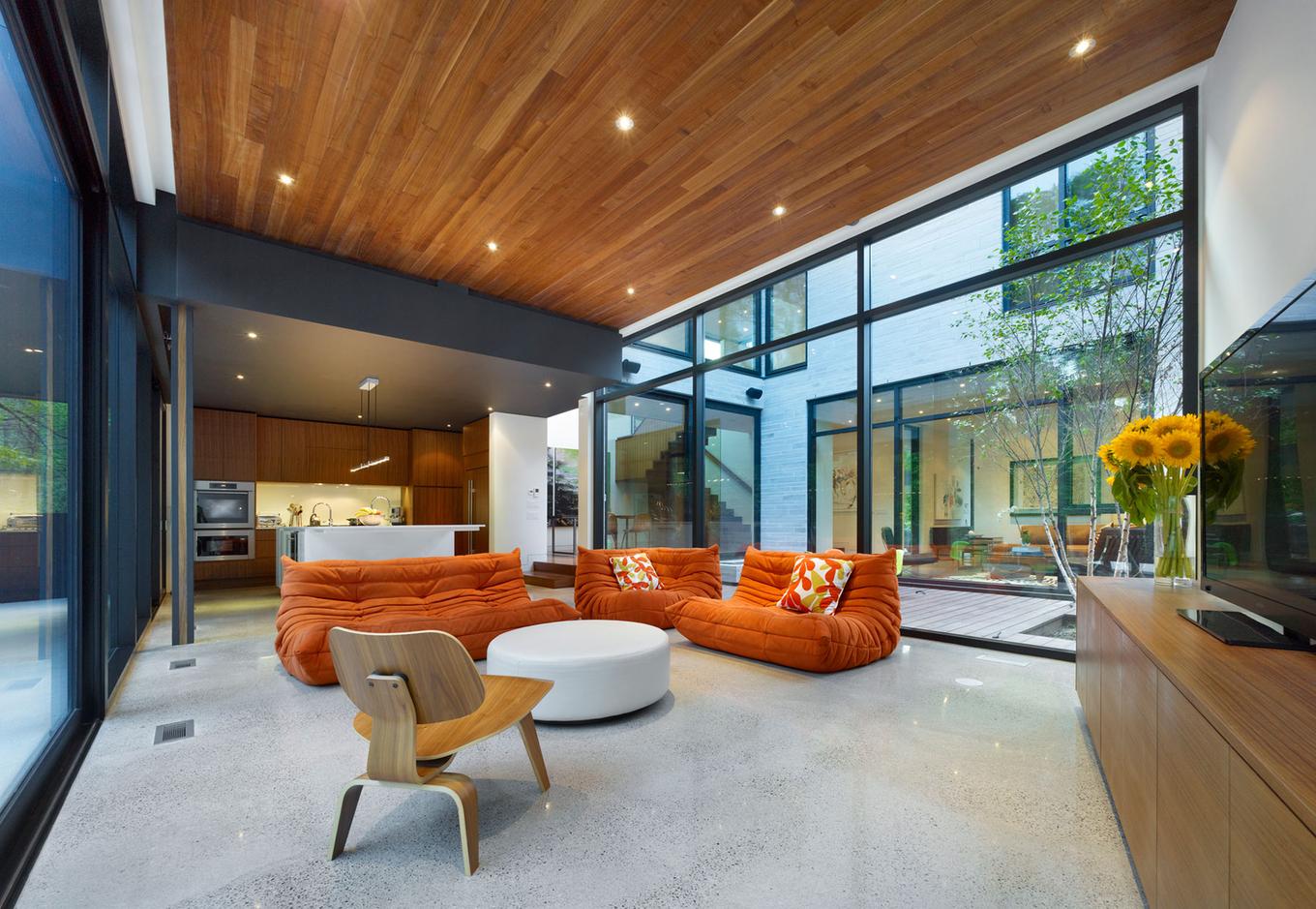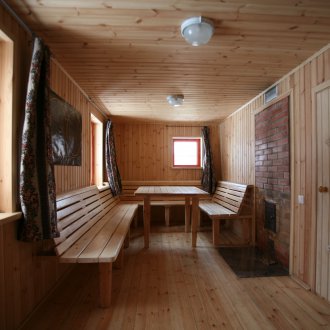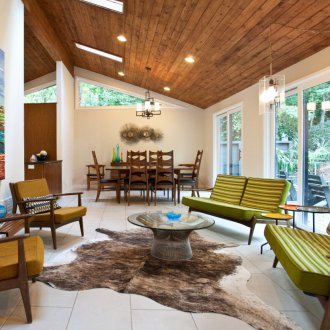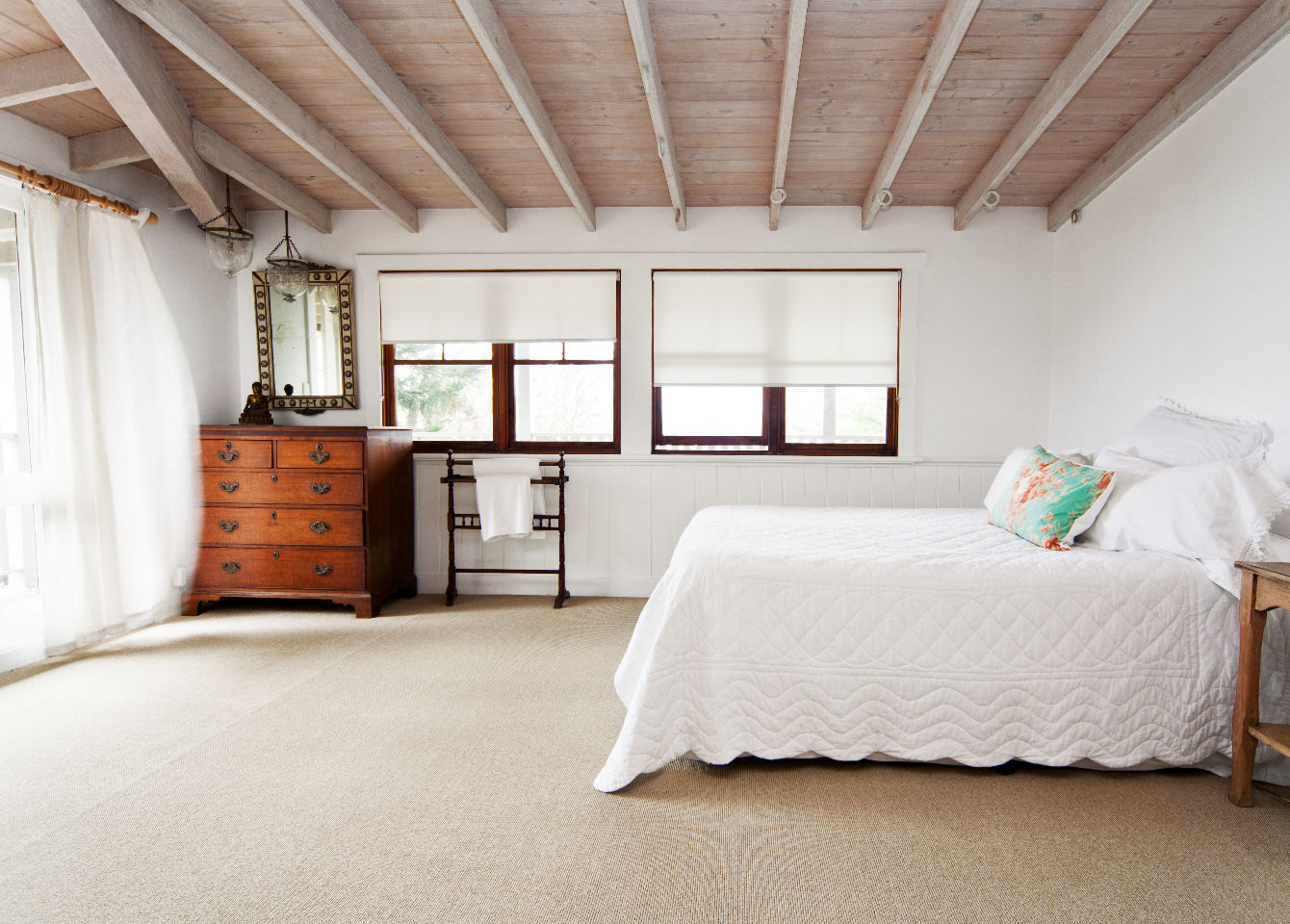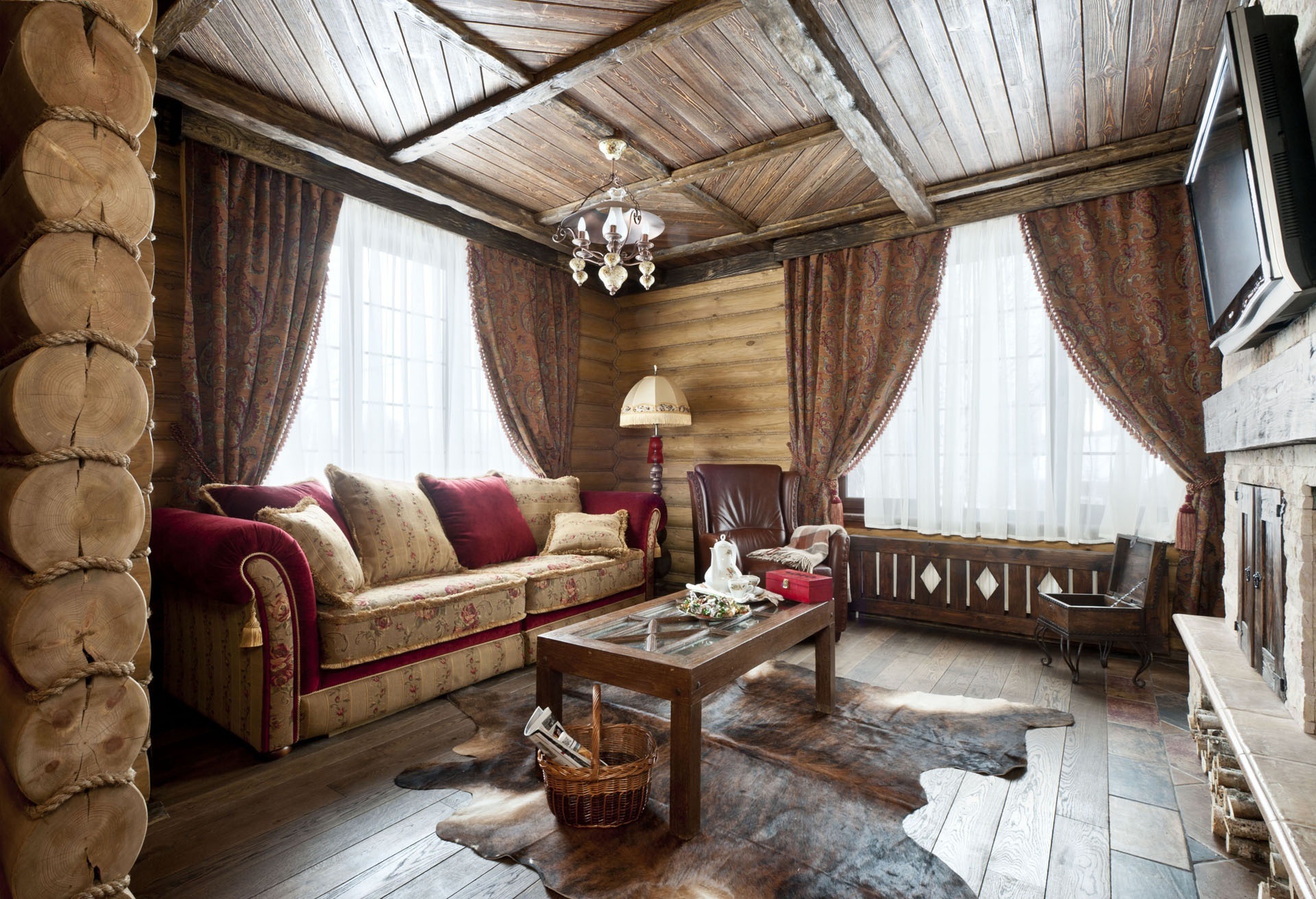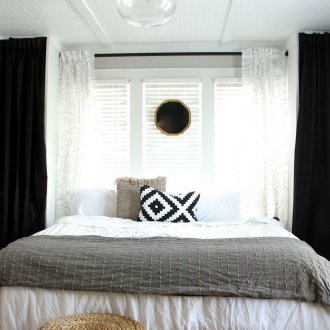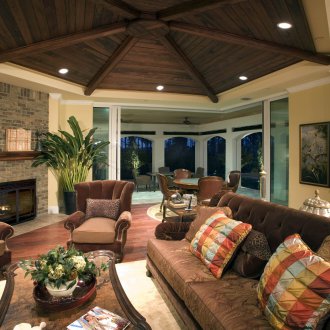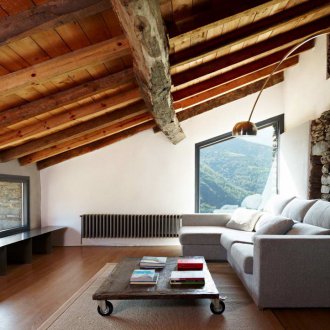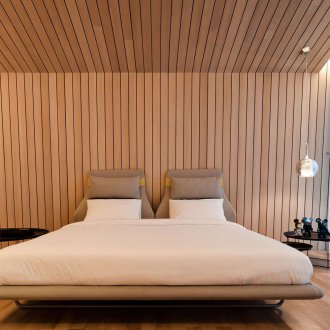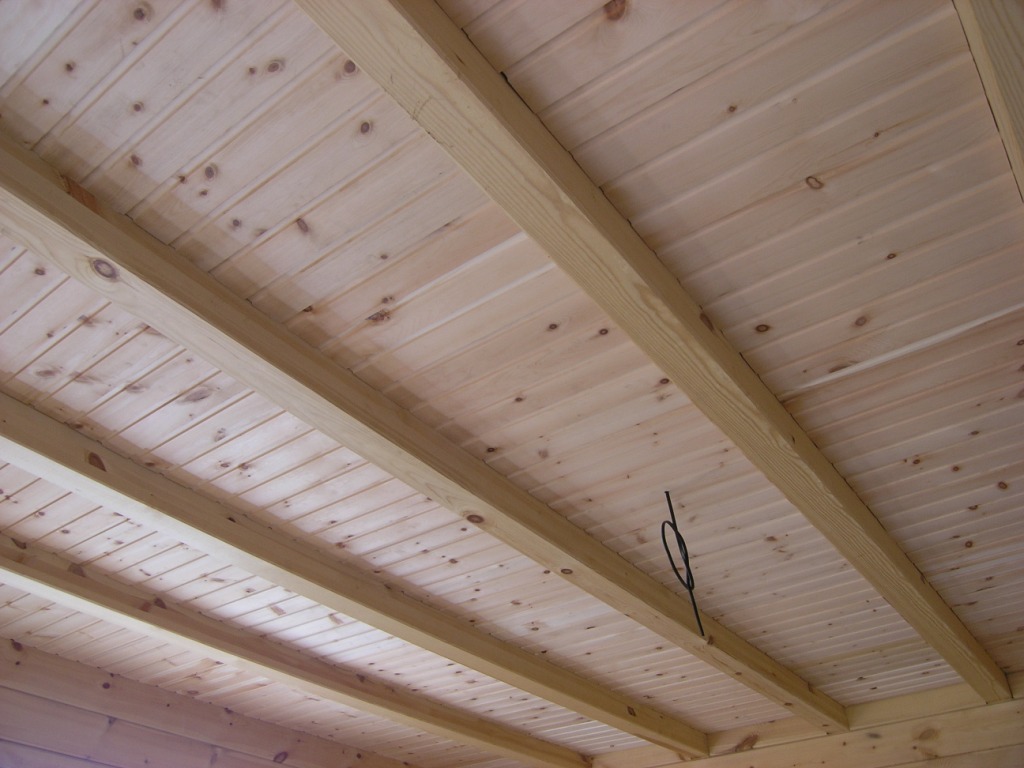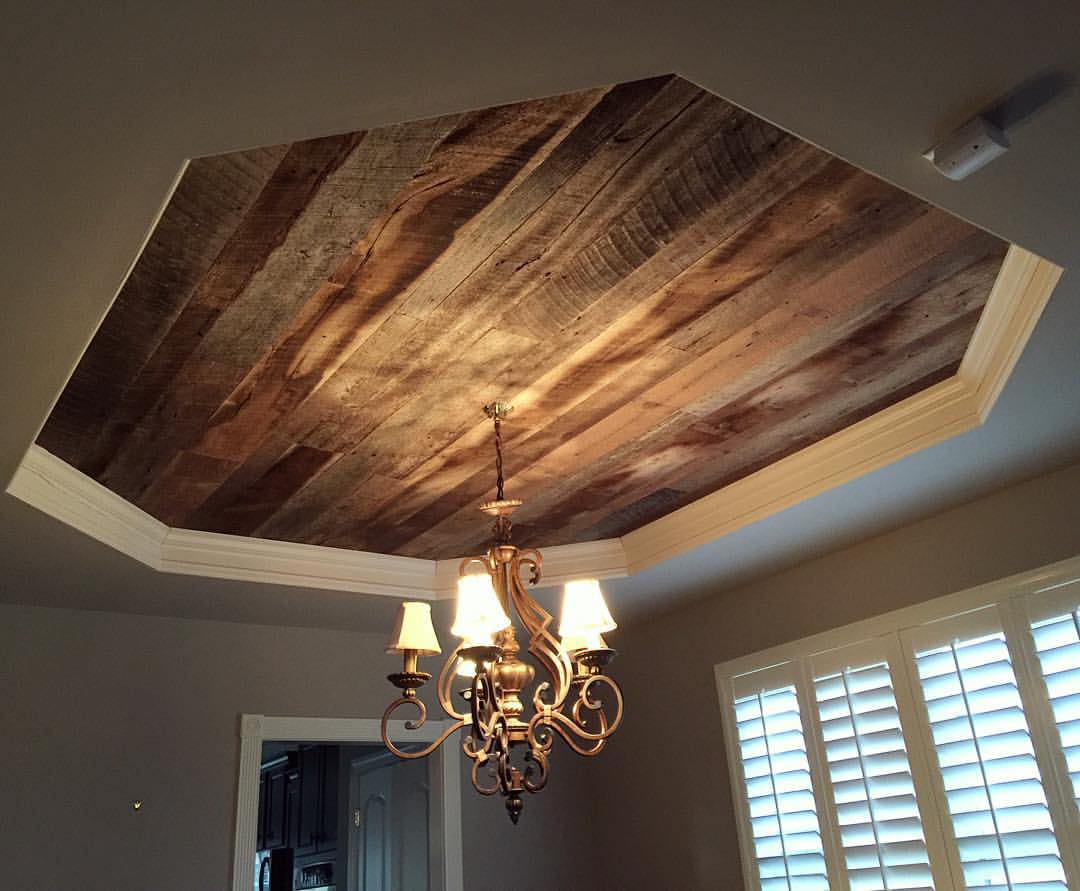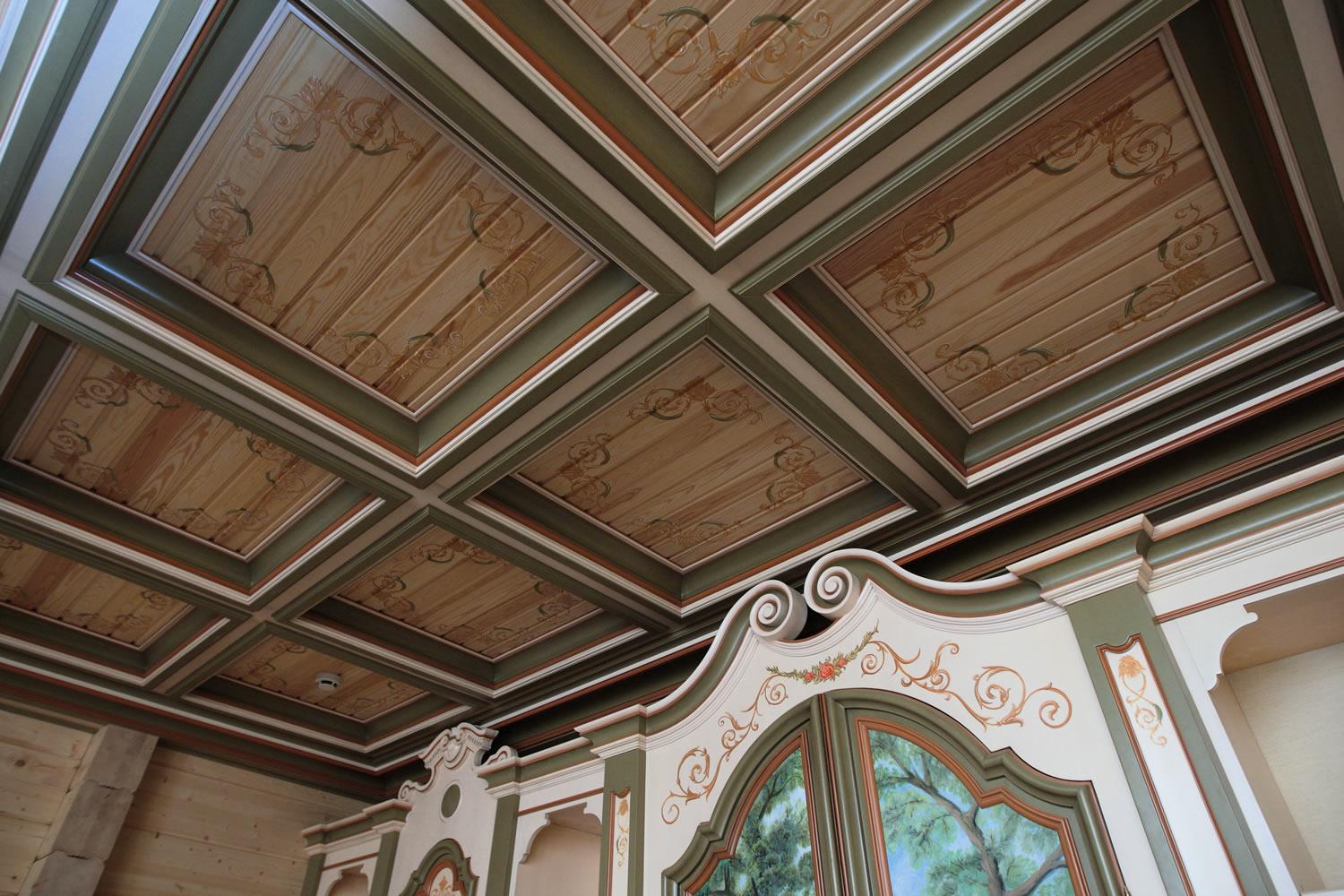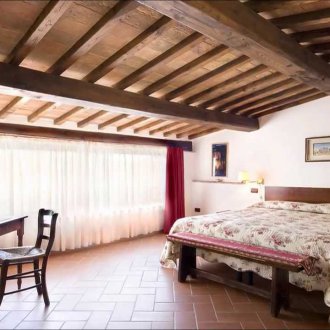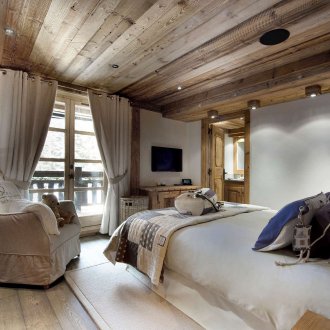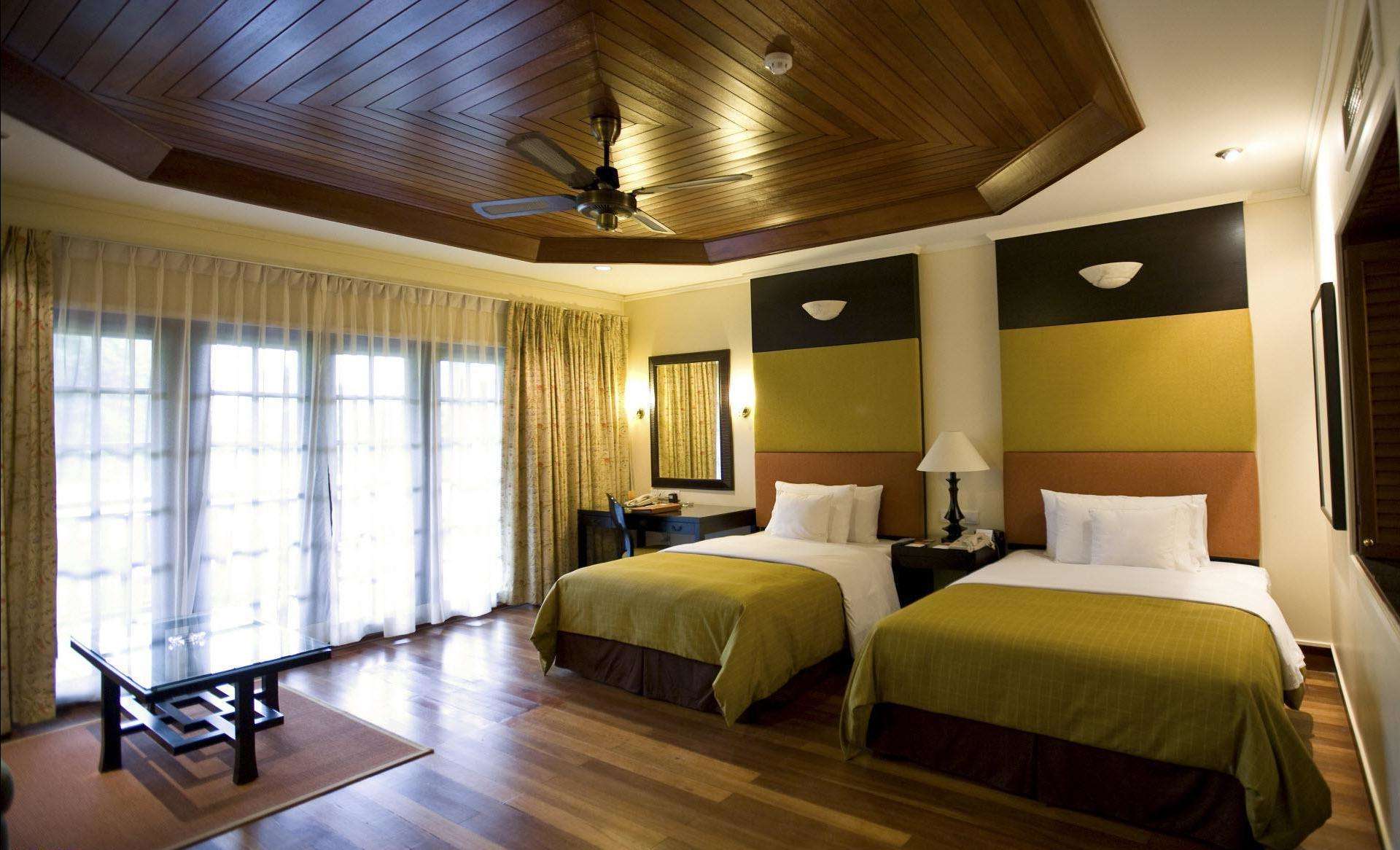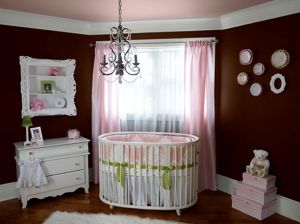Ceiling from boards: features of natural coating (22 photos)
Content
In the modern interior, the direction of using natural materials is actively developing. The ceiling from the boards allows not only to perfectly style the room with a retro-style, but also fills the concrete housing with the comfort of a warm wooden house. There are different ways of installing such a ceiling, in which both processed lumber and unedged boards can be used. How to hem the ceiling with a board will be described later.
Cons and pros of the wooden ceiling
The ceiling of wooden boards has its positive qualities and disadvantages.
Cons of wooden ceilings:
- If in a house or non-residential premises where a ceiling of such a design is installed, the air humidity exceeds the norm, then material deformation is possible.
- High-quality lumber is much more expensive than synthetic finishing materials, so with a large surface area, ceiling lining will cost a round amount.
- Sudden changes in temperature can also lead to deformation of the ceiling board.
- Low fire safety.
The advantages of a wooden ceiling:
- It has excellent sound and thermal insulation.
- You can install it yourself.
- It has high strength.
- It has an attractive appearance.
- Environmental Safety.
- Aesthetic look.
There are much more positive qualities than disadvantages that can be successfully combated by processing the material with special compounds that protect natural wood from destruction and deformation.
Mounting a wooden ceiling
One of the most common materials that are used for covering the ceiling is a lining board. The ceiling of this material has high aesthetic indicators, and the cost of lumber will be significantly lower in comparison with a parquet board.
Installation of a lining board is carried out in several stages:
- Foundation preparation.
- Marking the ceiling.
- Installation of the frame.
- Lining mount.
Each stage must be performed in accordance with the technical requirements for the installation of a wooden coating.
If the wooden ceiling from the edged board is installed on a concrete base, then before starting installation work, it is necessary to thoroughly clean the surface. If there is an old finish, it must be dismantled, and if there are cracks on the surface of the base, putty the ceiling.
A surface leveled and cleaned of dirt and dust must be treated with antiseptic compounds. This treatment helps prevent wood damage by various bacteria and fungi.
Correct marking of the ceiling surface allows you to make the ceiling perfectly flat. The marking is carried out using the building level and a painting masking cord, which is installed with perfectly even parallel lines at a distance of 10 cm from the concrete floor.
Cladding the ceiling with lining is carried out using metal or wooden profiles, which are installed along the marking lines. The optimal distance between the profiles for finishing the ceiling with a board is 30 cm. This arrangement of the frame completely eliminates the sagging of the finishing material. Fastening to the base is carried out using dowels or screws.
Regardless of the humidity level in the room, it is recommended to use a galvanized metal profile, and when installing wooden supporting structures, the material must be treated with antiseptics without fail.
The installation of the lining can be carried out in different ways, but the most aesthetic and practical way is to use special clamps, which are attached to the underside of the board and the crate.
Installation of lining begins from one of the corners of the ceiling. When installing a wooden ceiling, be sure to leave a technological gap between the end board and the wall, which should be about 10 mm.
The first ceiling board is installed using a furniture stapler, the next is mounted in the grooves of the previous one and fixed to the crate with the help of clamps-clamps. Thus, the entire ceiling is hemmed, while you should not forget about the locations of the fixtures and the installation of electrical wiring, for which it is necessary to make holes in the ceiling.
Upon completion of the installation of a wooden ceiling, it is recommended to treat the entire surface with special compounds that give a matte finish to the wood and protect it from damage by fungi and weevils.
Wooden ceiling in the bath
Not every home master knows how to make a ceiling in a bathhouse made of wood, so before you go to buy material for these purposes, you should study this section in detail.
For the organization of the ceiling in a room with high humidity, it is not recommended to use coniferous wood. Such a board emits a large number of aromatic resins when heated, which under certain conditions can ignite spontaneously. The ability of a tree to change volume when wet should also be taken into account when planking the ceiling.
Wood is much more susceptible to decay in high humidity, so when the ceiling board in the bathhouse is selected, it must be properly processed and installed.
In the bath can be installed the ceiling of unedged boards. In this case, the financial cost of acquiring the material will be significantly reduced, but the consumption of the antiseptic that will be used for application to the untreated wooden surface will be significantly increased due to the greater roughness of such material. If you use planed boards, you can also significantly reduce costs. You can plan unedged wood yourself; for this purpose, you can use special machines or use the “grinder”.
Regardless of the type of lumber used, the ceiling must be reliably insulated and waterproofed from the surface of a cold attic. In this case, the probability of condensation from the back of the wood will be minimized. Liquid for wood is always undesirable, but if the surface of the board can be dried from the outside, then the moisture formed from the inside will have a destructive effect for a long time.
You need to know how to properly install the vapor barrier layer, as well as equip the ceiling insulation in accordance with all the rules. Of the modern materials used for heat and waterproofing damp rooms, foil vapor insulators and stone wool are used. Glass wool for insulation is of little use due to its high hygroscopicity. In order to reliably protect the wooden ceiling from the penetration of moisture from the outside, as well as from the leakage of humid air from the steam room, it is recommended to use a double layer of waterproofing, where the usual white plastic film can be the external material.
Typically, such double waterproofing is used to protect the insulation, which is placed in the ceiling lathing, but when insulating the attic with bulk materials, one layer is enough, which is placed under the ceiling.To warm the ceiling, you can use the old fashioned way. In ancient times, a mixture of clay and straw was used to insulate the ceiling in the bathhouse.
When the ceiling insulation is completed, the boards are attached to the crate with the help of finishing nails. If a lining is used as the material for the bath ceiling, then fastening is carried out by the method described above.
Attic wooden ceiling
For the installation of an attic wooden ceiling, the use of lining is most preferable. Given the complex geometry of the room, the use of this material can significantly reduce labor costs. In the attic, it is necessary to make high-quality insulation and waterproofing.
As a heater, tiled mineral heaters are used, which are installed in pre-prepared profiles from boards. Thermal insulation material on both sides is subject to reliable waterproofing to exclude the possibility of moist air entering the room. Lining is installed on the crate with the help of clamps-clamps. If other lumber is used for decoration, then ordinary wood screws can be used to fix it.
The ceiling made of wooden materials makes the room more comfortable, but you should remember about the high combustibility and the possibility of damage to the tree from moisture. High-quality processing of the material with special compounds can significantly reduce the risk of wood burning, and antimicrobial protection - to minimize the likelihood of wood damage by various microorganisms.
